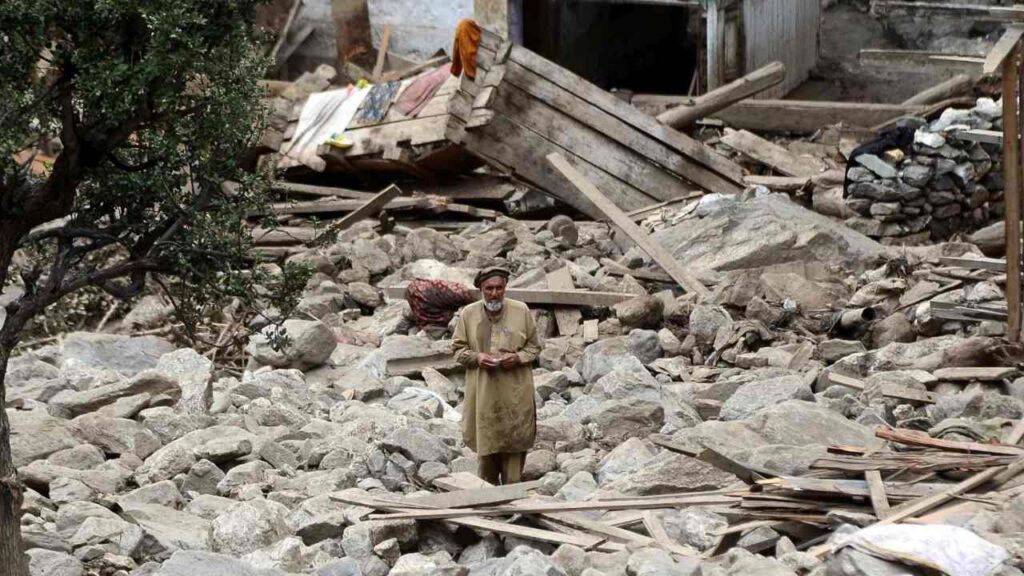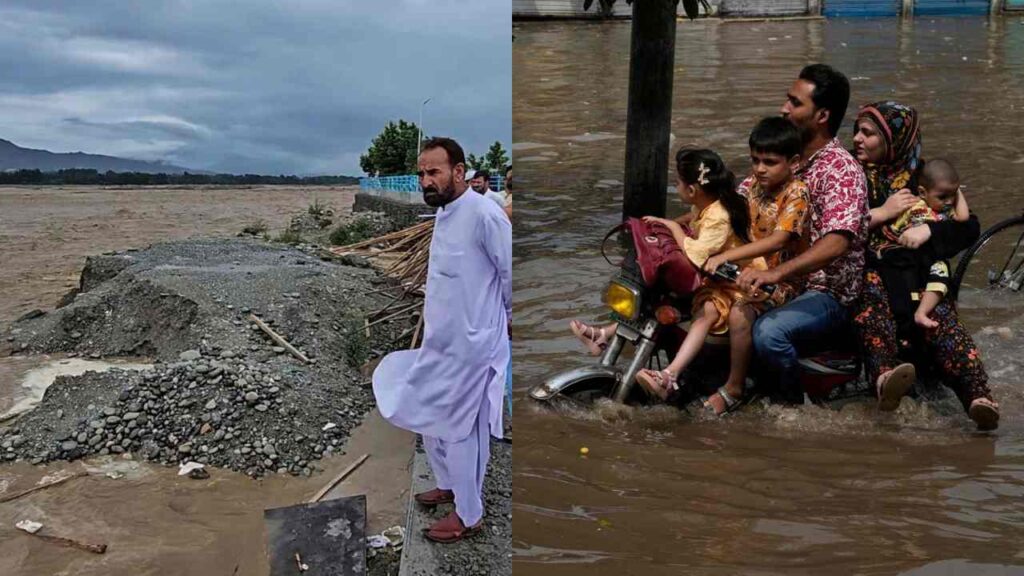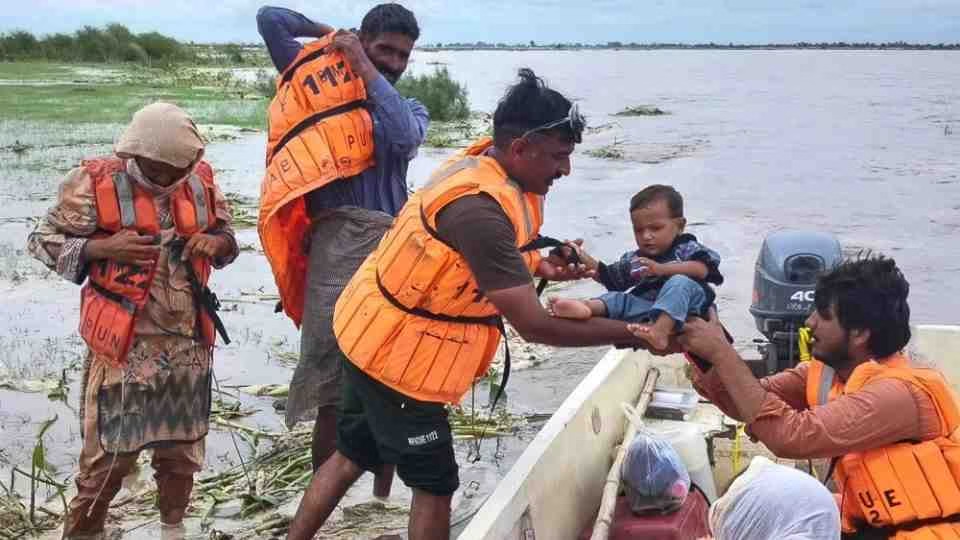Torrential Monsoon Rains Trigger Catastrophic Flooding Across Northwest Pakistan and Kashmir Region
Flash floods triggered by torrential monsoon rains have killed at least 220 people across Pakistan and India-controlled Kashmir, with rescue teams racing against time to locate survivors as weather forecasters warn of more severe storms ahead.
Devastating 48-Hour Period
The catastrophic flooding struck northwest Pakistan over the past 48 hours, sweeping away dozens of homes and leaving rescue workers frantically searching through debris for survivors. The death toll continues to rise as emergency teams reach previously inaccessible areas devastated by the sudden deluge.
Pakistani officials report that since Thursday, rescue operations have successfully evacuated more than 3,500 tourists who had become trapped in flood-affected areas, despite government warnings advising travelers to avoid vulnerable regions in the north and northwest.
Kashmir Village Devastated
In India-controlled Kashmir, the remote village of Chositi in Kishtwar district bore the brunt of flash floods that struck two days earlier. Rescuers continued scouring the area on Saturday, searching for dozens of missing residents after the floods claimed 60 lives and injured approximately 150 people, with about 50 in critical condition.
Eyewitness Accounts of Destruction
Survivors described scenes of unprecedented destruction as floodwaters carrying massive boulders demolished entire communities within minutes. One eyewitness who escaped the flooding in Buner district recounted seeing floodwaters laden with “hundreds of boulders” and “tons of rocks” crashing through residential areas.
Local police officer Imtiaz Khan, who narrowly survived the disaster, provided a harrowing account of the floods’ sudden onset: “A stream near Pir Baba village in Buner swelled without warning. At first, we thought it was a normal flash flood, but when tons of rocks came crashing down with the water, 60 to 70 houses were swept away in moments.”
Khan added that many victims’ bodies were left severely damaged by the boulder-laden floodwaters, complicating identification and recovery efforts. “Our police station was washed away too and if we hadn’t climbed to higher ground, we would not have survived,” he told The Associated Press.

Rescue Operations Continue
Hundreds of rescue workers remain deployed across Khyber Pakhtunkhwa province, where torrential rains and sudden cloudbursts triggered massive flooding on Friday. Mohammad Suhail, a spokesman for emergency services, confirmed that search and rescue operations are ongoing in Buner and several other severely affected areas.
Emergency responders have focused their efforts on the hardest-hit villages of Pir Baba and Malik Pura, where the majority of fatalities occurred. Kashif Qayyum, a deputy commissioner in Buner, reported that rescue teams pulled 63 additional bodies from homes destroyed by flash floods and landslides overnight.
The challenging terrain and continued instability in flood-affected areas have complicated rescue efforts, with many remote villages remaining difficult to access.
Weather Warnings and Future Threats
Pakistan’s Meteorological Department has issued dire warnings about the coming days, predicting continued torrential rainfall and cautioning that monsoon activity is expected to intensify beginning Sunday. The weather service specifically highlighted increased risks for northern and northwestern regions already devastated by the current flooding.
These predictions raise serious concerns about the potential for additional casualties and further destruction in areas where communities are still recovering from the initial disaster.
Government Response and Support
Pakistani leadership, including the Prime Minister and President, have expressed condolences to families who lost loved ones in the floods and offered prayers for the injured victims’ recovery. Mass funeral services were conducted on Saturday as communities mourned their losses.
Authorities have mobilized emergency supplies, providing tents and food assistance to displaced residents in Buner and other affected areas. The government’s disaster response teams are coordinating with local officials to ensure continued support for survivors.
Tourist Safety Concerns
The significant number of tourists requiring evacuation—more than 3,500—highlights the ongoing challenge of ensuring visitor safety in Pakistan’s mountainous northern regions during monsoon season. Despite official warnings about avoiding vulnerable areas, many travelers had continued to visit high-risk zones.
This incident underscores the importance of heeding government advisories during severe weather periods, particularly in regions prone to sudden flooding and landslides.
Regional Impact and Monsoon Season
The deadly floods represent the latest in a series of extreme weather events that have increasingly affected South Asia during monsoon seasons. Pakistan’s mountainous regions are particularly vulnerable to flash flooding, where steep terrain can channel rainwater into devastating torrents within minutes.
The scale of destruction—with entire villages swept away and infrastructure demolished—demonstrates the growing intensity of weather-related disasters in the region.
Ongoing Challenges
As rescue operations continue, authorities face multiple challenges including accessing remote areas, providing emergency shelter for displaced families, and preparing for potentially more severe weather in the coming days. The combination of damaged infrastructure and ongoing weather threats complicates both immediate rescue efforts and longer-term recovery planning.
The death toll may continue to rise as rescue teams reach additional affected areas and as the full extent of the disaster becomes clear. With more torrential rains forecast, emergency services remain on high alert for potential additional flooding events that could further endanger both residents and rescue workers.
Community leaders and disaster management officials emphasize the critical importance of evacuation orders and early warning systems as the region braces for what meteorologists warn could be an intensification of the current monsoon activity.






